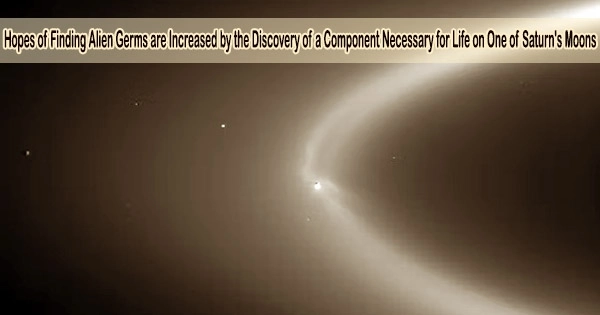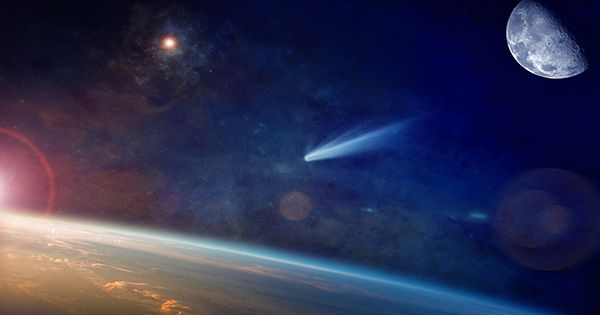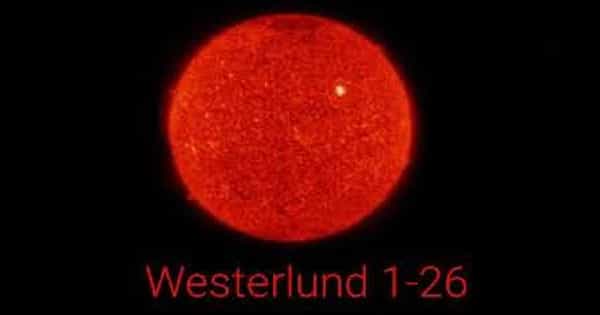The teeny moon of Saturn called Enceladus has everything. Ongoing geological processes have carefully etched its icy surface. An interior ocean of liquid sits behind its frozen exterior. Warm, chemically charged water seeps from the rocky core of the area and may feed microscopic life on the ocean floor.
More proof has now been found according to a new study that was published in Nature. It offers the first evidence that phosphorous, a substance necessary for life, is present in the water of Enceladus.
The Cassini spacecraft, operated in orbit about Saturn 2004–17 by Nasa and the European Space Agency (Esa), found plumes of ice particles venting from cracks. These pierce through the icy shell completely, exposing the ocean water at the bottom of each fracture to space’s vacuum. Here, the lack of a constraining pressure leads the ocean water to bubble and evaporate in the form of plumes.
An unexpected benefit that wasn’t anticipated when the project was first conceived, these plumes supplied samples of spray from Enceladus’ interior ocean that were collected for examination by Cassini during numerous close fly-bys.
During these brief trips through the plumes, particles were collected for analysis, and the results showed that the ice is contaminated with small amounts of silica, molecular hydrogen, and simple organic compounds.
Taken together, these indicate that chemical reactions between water and warm rock take place on the ocean floor, most probably at “hydrothermal vents” (a fissure releasing heated water) similar to those on Earth.
This is significant. It means Enceladus has all the ingredients for microbial life to sustain itself (in the absence of sunlight). It is in fact the setting considered most likely to have helped life on Earth begin. If it happened on Earth it could have happened inside Enceladus too.
Missing link
All life on Earth requires six essential elements: carbon, hydrogen, nitrogen, oxygen, phosphorus and sulfur known collectively by the scarcely pronounceable acronym CHNOPS. Phosphorus had never been found in Enceladus plume samples, but the other five of these six required elements have.
Because it is required for the phosphate groups (phosphorus plus oxygen), which connect the lengthy strands of nucleic acids like DNA and RNA that contain genetic information, phosphorus is an essential component. It also allows cells to store energy by means of molecules such as adenoside triphosphate (ATP for short).
Of course, there is no guarantee that any life on Enceladus, if it exists at all, will require nucleic acids or ATP. It does, however, make Enceladus a more likely option given that we are convinced that there is enough phosphorus available there because the existence of phosphorus is necessary for life as we know it.
Canny collecting
By avoiding the jumbled data gathered during Cassini’s franticly rapid zooms through the plumes, the team was able to locate Enceladus’ phosphorous. Instead, they scoured sparser data accumulated in a more leisurely fashion by Cassini’s Cosmic Dust Analyzer during 15 periods between 2004 and 2008 while Cassini was traveling within one of Saturn’s rings: the “E-ring.” Enceladus travels along this hoop as it orbits.
The E-ring hoop is more than 2,000km thick. The only evidence we have that the plumes were still active five years after the end of the Cassini mission is a recent photograph from the James Webb Space Telescope, which shows that about 30% of the ice particles released in Enceladus’ plumes wind up there.
Nine of the approximately 1,000 ice particles, which are thought to be frozen spray from Enceladus, were confirmed to contain phosphates after the researchers sorted through examinations of them. This may seem like a meager finding, but it is sufficient to show that Enceladus’ ocean contains more than enough dissolved phosphorous to support the existence of life.
In fact, additional laboratory research indicates that the amount of dissolved phosphorus in the ocean water of Enceladus may even be hundreds of times higher than that of Earth’s oceans.
According to the research team, their findings and related modeling strongly suggest that any icy moon that formed farther from the sun than the solar system’s “carbon dioxide snowline,” a region where temperatures during planetary formation were low enough for carbon dioxide to freeze, is likely to be rich in phosphorus. This condition is met for icy moons at Saturn and beyond, but not at Jupiter.
Jupiter’s distance from the sun places it beyond the “water-ice snowline” (where water becomes ice), but it is too close to the sun, and hence too warm, to be beyond the carbon dioxide snowline.
So where does this leave Jupiter’s moon Europa, a target for missions due to arrive about ten years from now?
This moon has been widely touted as potentially able to support a more flourishing biosphere as Enceladus because of its larger size and greater store of chemical energy in its rocky interior. The authors of the current study are coy about this, but their modeling indicates that the internal ocean of Europa has a phosphate content that is a thousand times lower than that of Enceladus.
I (David Rothery) don’t think that changes anything, and we should keep expecting Europa to be habitable. But it would be reassuring to find some proof of phosphorus there too.
















